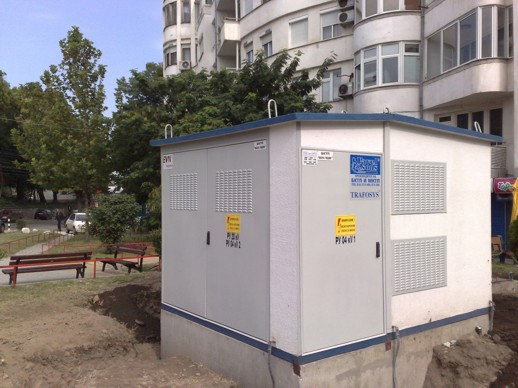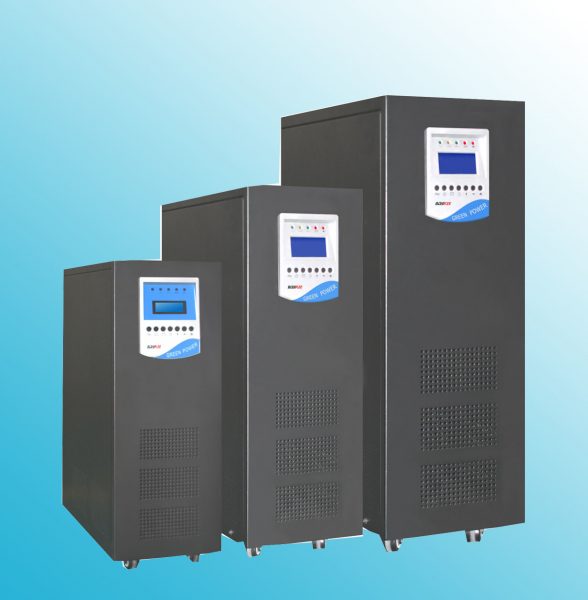
رسم است که در یک تابلوی تک فاز وقتی مقاومت چاه زمین بالای ۲ اهم است شینه نول و ارت را به هم متصل نمی کنند ولی مطابق سیستم TN مقاومت چاه باید زیر ۲ اهم باشد و این دوشینه باید به هم وصل شوند
می خواستم بدانم این کار صحیح است یا نه و وصل نکردن این دو شینه در حالی که مقاومت بالای ۲ اهم است چه دلیلی دارد و در صورت وصل شدن چه مشکلی بروز خواهد کرد
اگر یک هادی برقدار و بدون عایق ( لخت) روی زمین مرطوب بیفتد ، حداقل مقاومت بین خاک مرطوب و نقطه ی نوترال ثانویه ی ترانسفورماتور توزیع ۷ اهم است . پس انتخاب مقاومت چاه زمین به عنوان ۲ اهم باعث می شود حداکثر حدود ۵۰ ولت ، ولتاژ تماسی به بدن انسانی اعمال شود که همان موقع مثلاً شاسی ارت شده ی یک تجهیز الکتریکی را لمس کرده است و ۵۰ ولت برای بدن خطرناک نیست ( رجوع فرمایید به معمای ۸ از بخش معماهای سیستم زمین ) ۵۰=۲۲۰*(۹/۲)
حال اگر در یک تأسیسات حرفه یی شما اثبات کنید که همه جا از سنگ یا کفپوش های عایق استفاده شده و آن مقاومت ۷ اهم مصداق ندارد و بسیار بیشتر است ، محق هستید مقاومت چاه را بیشتر بگیرید . فکر می کنم در سیستم TN به هرحال شینه ی نول و ارت به هم وصل می شوند و ارتباطی به ۲ اهم و بیشتر ندارد .
مسئله اتصال شمش نول و ارت یا عدم اتصال آنها موضوع مهمی است که استانداردها و توصیه نامه های مختلف به آن پرداخته اند. اتصال این دو به هم در ثانویه ترانس توزیع به دلیل لزوم کنترل اضافه ولتاژ نوترال ناشی از شناوری نول بر اثر وقوع یک اتصال فاز – زمین مورد تأکید است. با این حال در تابلوهای توزیع کوچک ( زیر سیستم تابلو اصلی) و بویژه تکفاز، الزامات دیگری مطرح است که گاهی جدا سازی نول و ارت را ایجاب می کنند. تعیین بعضی مقادیر امپدانسی نیز به موضوع پارازیتهای ناشی از عبور جریانهای نوترال از سیستم زمین بر می گردد. برای مثال تابلوهای روشنایی تکفاز منبع مهمی از هارمونیکهای جریانی هستند. هارمونیکهای جریانی بخودی خود موجد شرایط نویزی نیستند. در شرایط کارکرد عادی سیستم ، افت ولتاژ ناشی از عبور هارمونیکهای جریانی از امپدانس زمین ( که متناسب با فرکانس هارمونیک افزایش یافته) در شرایط اتصال نول و ارت می تواند موجد ولتاژهای پارازیت روی سیستم های حساس الکترونیکی شوند. به هر حال واضح است که در شرایط امپدانس بالای سیستم زمین مشکل فوق حادتر خواهد بود.
This is vital since touch voltages that exists for any amount of time are an extreme safety hazard as shown in figure four. Should someone complete the fault circuit before the breaker opens, death could result.
Imagine a typist sitting at a workstation with her shoes off and her feet resting on one of those outlet covers on the floor. In my experience, this scenario is not farfetched.
Many workers receive electrical shocks under these circumstances. However, the dangerous touch voltages do not exist from faults. More often than not they exist due to wiring errors. The most common wiring error
I see is a non-compliant neutral to ground bond.
Where is it NEC compliant to bond neutral and ground? The NEC prescribes two places. The first place that we find this bond is at the service entrance inside the main service panels. Why? Fault current at this point needs to come from the utility source. The other place where the neutral and ground are required to be bonded is on the secondary side of what the NEC calls a “separately derived system.” The most common separately derived system is a power transformer where the primary and secondary windings are galvanically isolated from one another. This describes the NEMA-type transformer widely used to distribute power inside all commercial buildings.
The reason for this is simple safety. The NEC wants the transformer providing the electric current in its own distribution system to be sole source for fault current in the event of a fault in that distribution system.
Fault current that does not have a short, low impedance path will not open breakers immediately.
A non-compliant neutral to ground bond is usually easy to spot. Open a distribution panel and look inside. All of the branch circuit neutral wires, the white wires, terminate on a common bus. All of the branch circuit ground wires, the green wires, terminate on their own bus. If these are interconnected in any way, a violation of the NEC exists. The IEEE Emerald book states that, “Improper, extraneous neutral-ground bonds are a relatively common problem that not only create shock hazards for operating personnel but can also degrade the performance of sensitive electronic equipment.” The relative impedance of the two paths at power frequencies will determine the amount of current flowing in the ground as opposed to the neutral. We mention “power frequencies” for a good reason. This is not 60Hz as we might normally assume. It is a complex waveform predominated by the third harmonic, i.e. 180 Hz as well as higher order harmonics.
When we inject unwanted higher frequency current in the ground path, we are going to have this current wandering around the continuous ground path in a facility. This is bad enough at 60 Hz, but at 180 Hz and higher, the values of impedance change and parasitic paths are created inside the facility and interconnected equipment. If the cable interconnecting the network has a shield, then some of this ground current will split off and flow through that path. With logic level of just a few volts, this will no doubt cause data errors and corruption.
If the data cable does not have a shield, there is no unwanted circulating current.
However, the current flowing down the ground path will create a voltage drop that will appear to modulate the ground reference of one PC (e.g.) with respect to the ground reference of the other. If this voltage differential is over a few volts, data corruption and interference will result.
Even more critical than that is potential damage to line driver chips. TTL line drivers have a destruct level of around 38 volts. CMOS chips are damaged at anything over 18 volts.
If this “modulation,” caused by ground current creates a potential difference across the chip greater than its destruct level. .































